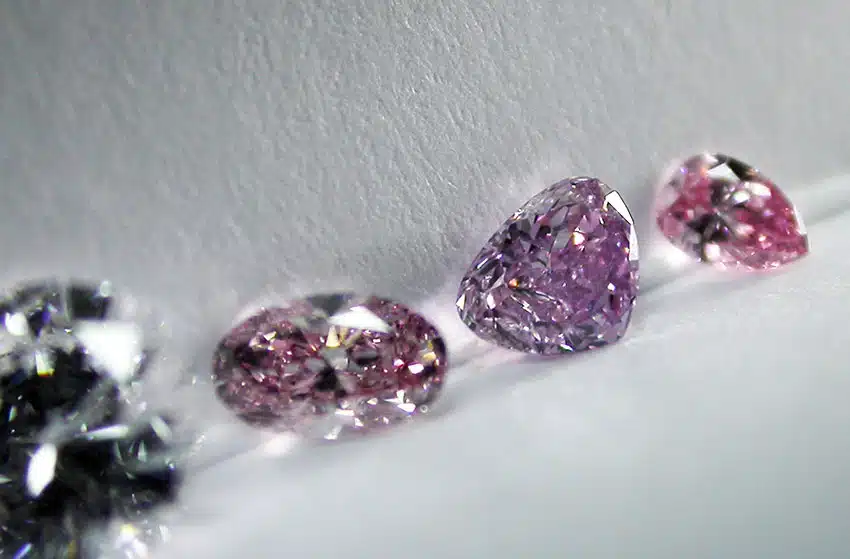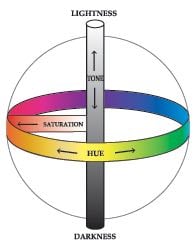General History of Natural Fancy Colored Diamonds

The most famous diamonds, the Blue Hope Diamond, as well as the Dresden Green, and the Great Conde Pink, are all fancy colored diamonds, indisputably among the most exciting and valuable diamonds anywhere. Up until the 16th century, diamonds, including fancy colored diamonds, all came from India. Eventually, when these diamonds were found outside India, in South America, especially in Brazil, and eventually in Africa, they were sold by local merchants, to English, French, Portuguese, and Dutch traders to be cut in India or in new cutting centers, like Paris, London, and Amsterdam.
Starting from around 1960, fancy colors have steadily captured attention, and have become passionately sought after by collectors and connoisseurs. Fancy colored diamonds, especially blue and red gems, have reached the highest diamond prices ever achieved.
Today, Africa is the main supplier of fancy colored diamonds. Other important producers include Brazil and Venezuela in South America, Australia, and to some extent, Russia and Canada.
Atomic elements and structure influence color
Diamonds are principally made of carbon. However, there are other elements that are part of the diamond’s internal structure, and these influence the color grade of fancy colored diamonds.
Diamonds with nitrogen (N) atoms in their internal atomic structure comprise the most abundant group of diamonds. While colorless diamonds in this group are loaded with nitrogen, the nitrogen in them is not “light absorbing.” The nitrogen in fancy colored diamonds, however, absorbs color, and this difference makes them yellow and orange. Nitrogen also is linked to color in brown diamonds, in some blue and green diamonds, as well as in Australian pink diamonds. Diamonds in the nitrogen group comprise 98 percent of all natural diamonds.
The nitrogen group is divided into different types, called IaAB, IaA, IaB and Ib, depending on the way nitrogen bonds with carbon in the diamond’s internal structure. There is a second, very rare group of diamonds, called type II. These diamonds are almost 100 percent nitrogen free, and comprise only 2 percent of all diamonds. This group is further divided into IIa and IIb diamonds.
Type IIa diamonds are the purest diamonds in nature and consist almost completely of carbon. These can be colorless, brown or pink.
Type IIb diamonds, ultra-rare and nitrogen-free in this type II group, become natural fancy blue diamonds. These contain boron (B) atoms in their structure, and it is this boron in the otherwise pure carbon atomic structure, that is responsible for the blue color in fancy color blue diamonds.
Fancy color identification and description

The human eye can distinguish about 13 million shades and nuances of color. However, to distinguish and differentiate color, we use a three-dimensional approach. we measure lightness to darkness (value), saturation (chroma), and hue (color).
When we need to differentiate and identify color in fancy colored diamonds, light refraction and fluorescence also influence our color perception. These factors make it even more complex to describe exact fancy colors. As we all perceive color slightly differently, in the final analysis, color differentiation becomes highly subjective. In grading laboratories, like IGI, professional gemologists who see thousands of examples to analyze, necessarily become more proficient, consistent, and accurate, in differentiating and identifying the final color grade of fancy colored diamonds.
Identification of the natural origin of fancy colors
Analyzing the origin of a colored diamond is complex. First, the diamond type has to be determined, because every type requires a specific and differentiated approach. The color hue further determines what approach the grader needs to take.
Determination of type is done by infrared spectrometry. According to the type of diamond, specific testing procedures are used. These include cryogenic (liquid nitrogen) spectrometry tests in the ultraviolet, visible and near infrared (UV-VIS-NIR) range, photoluminescence spectra (PL), and fluorescence tests using short wave ultraviolet (UV) devices. One important instrument used in color origin analysis is the DiamondView™.
Further analysis of a diamond’s inclusions, using polarizing filters and an immersion microscope may reveal additional information about possible treatments, and enable the laboratory’s gemologist to identify the diamond’s color origin.
All these are the ingredients of a recipe for the scientific knowledge that accumulates in a professional laboratory such as IGI. Considering that there is a constant evolution of treatments and processing techniques such as synthetic diamond, it is vital for gem labs to be alert and well informed to continuously update their scientific knowledge by following this evolution in a disciplined, defensive way.
Grading natural fancy colored diamonds

Using the Munsell Color System parameters, fancy colored diamonds are graded by measuring hue, saturation, light to dark tone (value), and the diamond’s uniformity of color distribution; gemologists describe, as accurately and as consistently as humanly possible, the color they see in a diamond. By this disciplined approach, they determine the final outcome of a diamond’s color.
The definition of color hue is complicated. Diamonds can appear to have a single hue, for example, fancy yellow. Or, diamonds can have a secondary or even third color that contributes to its final color determination. An example of this is “fancy greenish-yellow”, or “fancy greenish-brownish-orange.”
The “basic” natural fancy colors are: black, white opalescent, gray, brown, yellow, orange, lime, green, blue, purple, and pink. Red, exists, but is infinitely rare. These colors can also be described in combination.

A color’s “strength” is identified in a saturation-tone grade: light, dark, intense, deep, or vivid. Sometimes, a single, generic color without a prefix is used to describe a diamond’s color outcome.
When grading fancy colors, reference master stones are used, and the final color grade is always given by consensus of several experienced gemologists. Color definition is, in the end, subjective, but a gemologist is a trained professional who, like a doctor, assesses the results of his examinations, and describes the color in a disciplined and consistent way.
Treated and processed fancy colored diamonds
Marie Curie was the first scientist to irradiate diamonds. Irradiated diamonds in yellow, orange, green, blue and pink shades are free of residual radioactivity. After irradiation, the resulting fancy color is steady and will not fade.
Black color is currently obtained by a graphitization process.
The High Pressure, High Temperature (HPHT) processed diamonds, no irradiation, generate remarkable permanent colors, such as pink, blue, and a large range of yellow, lime, orange and brown hues.
For both techniques, a report is issued with clear disclosure indications.